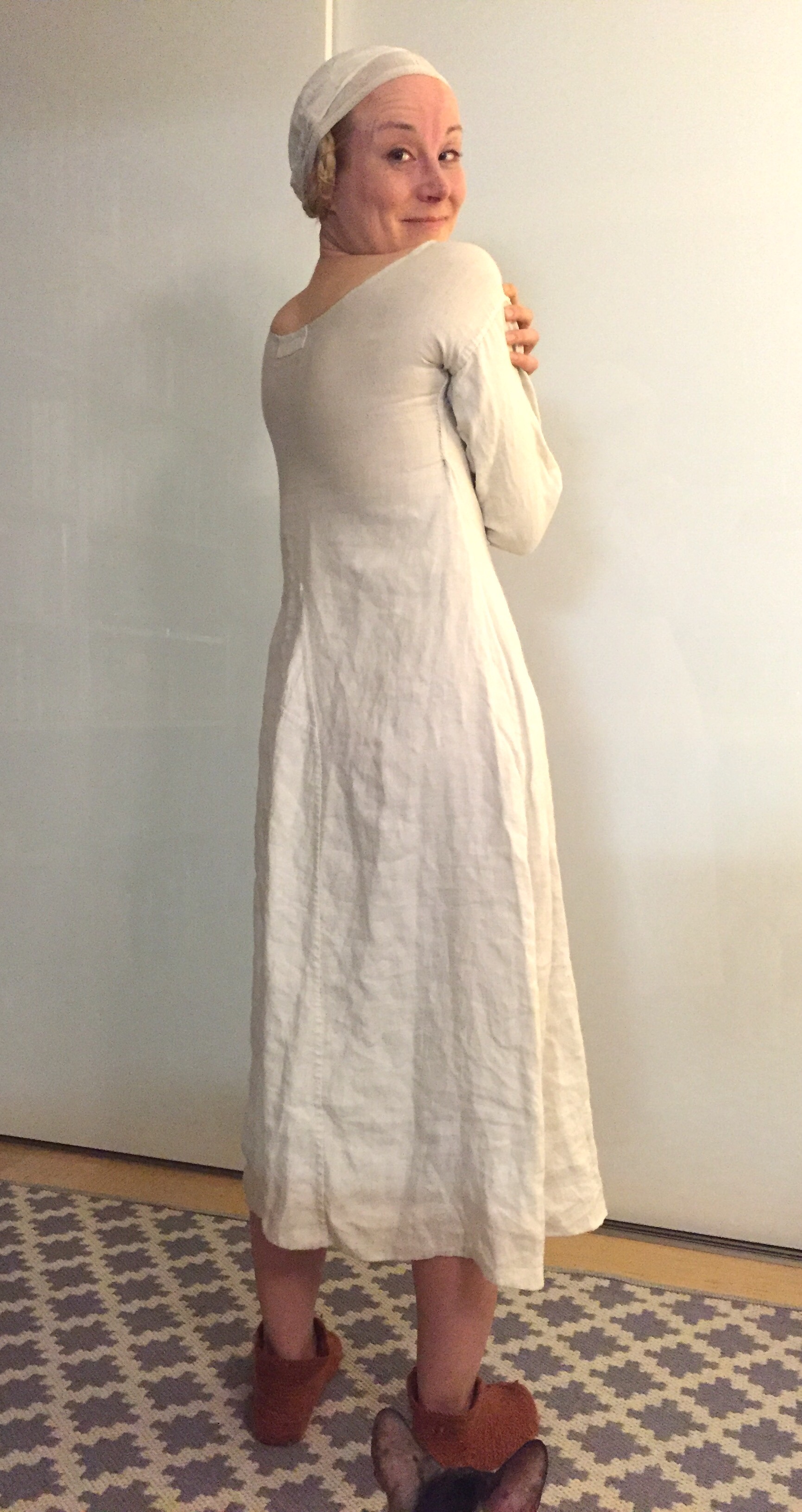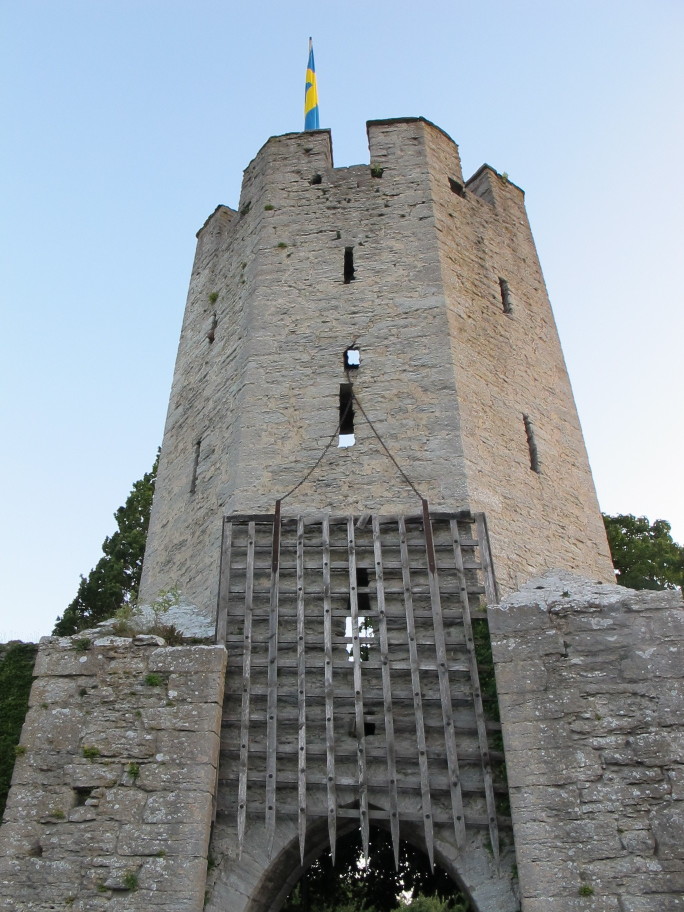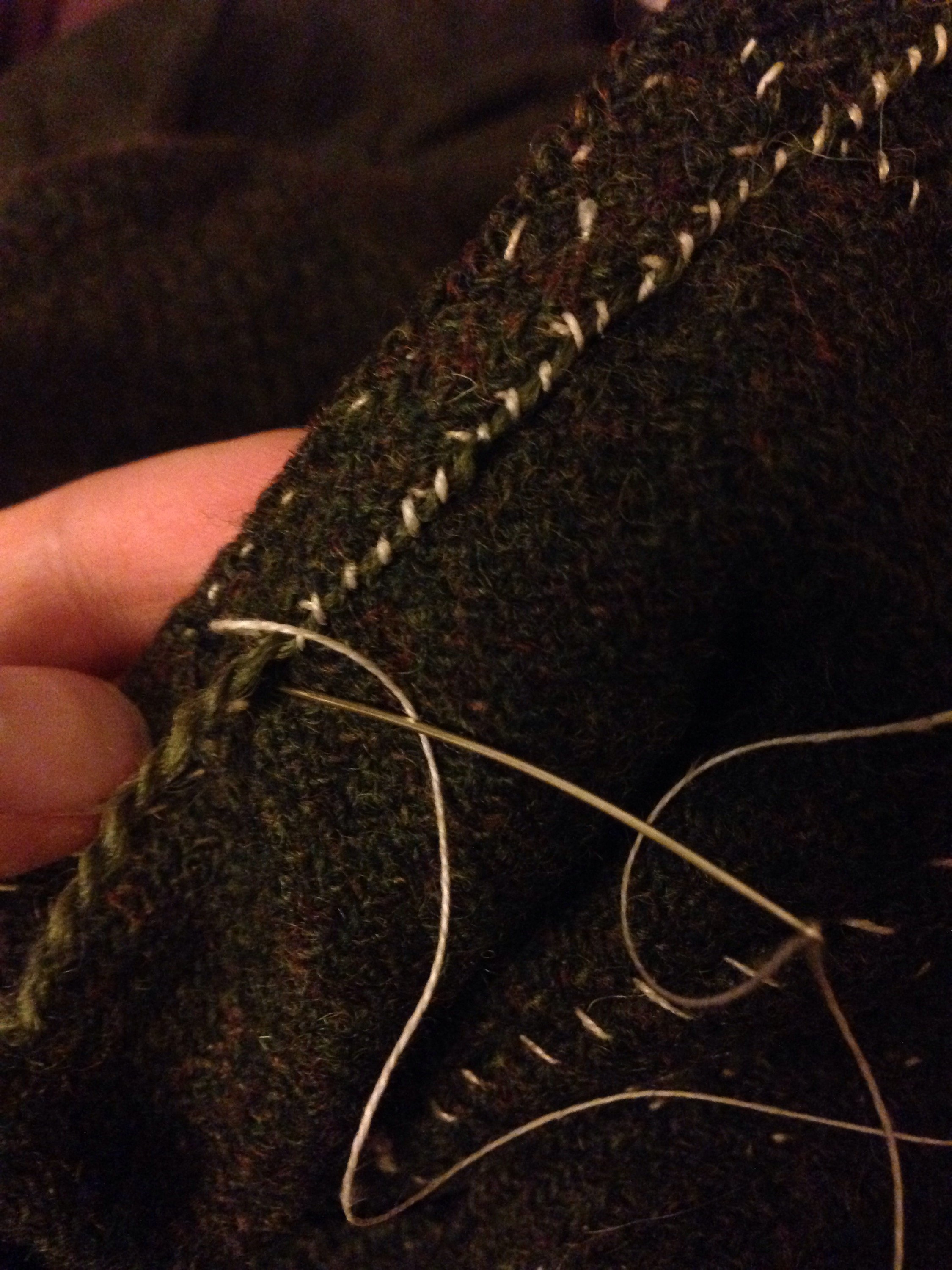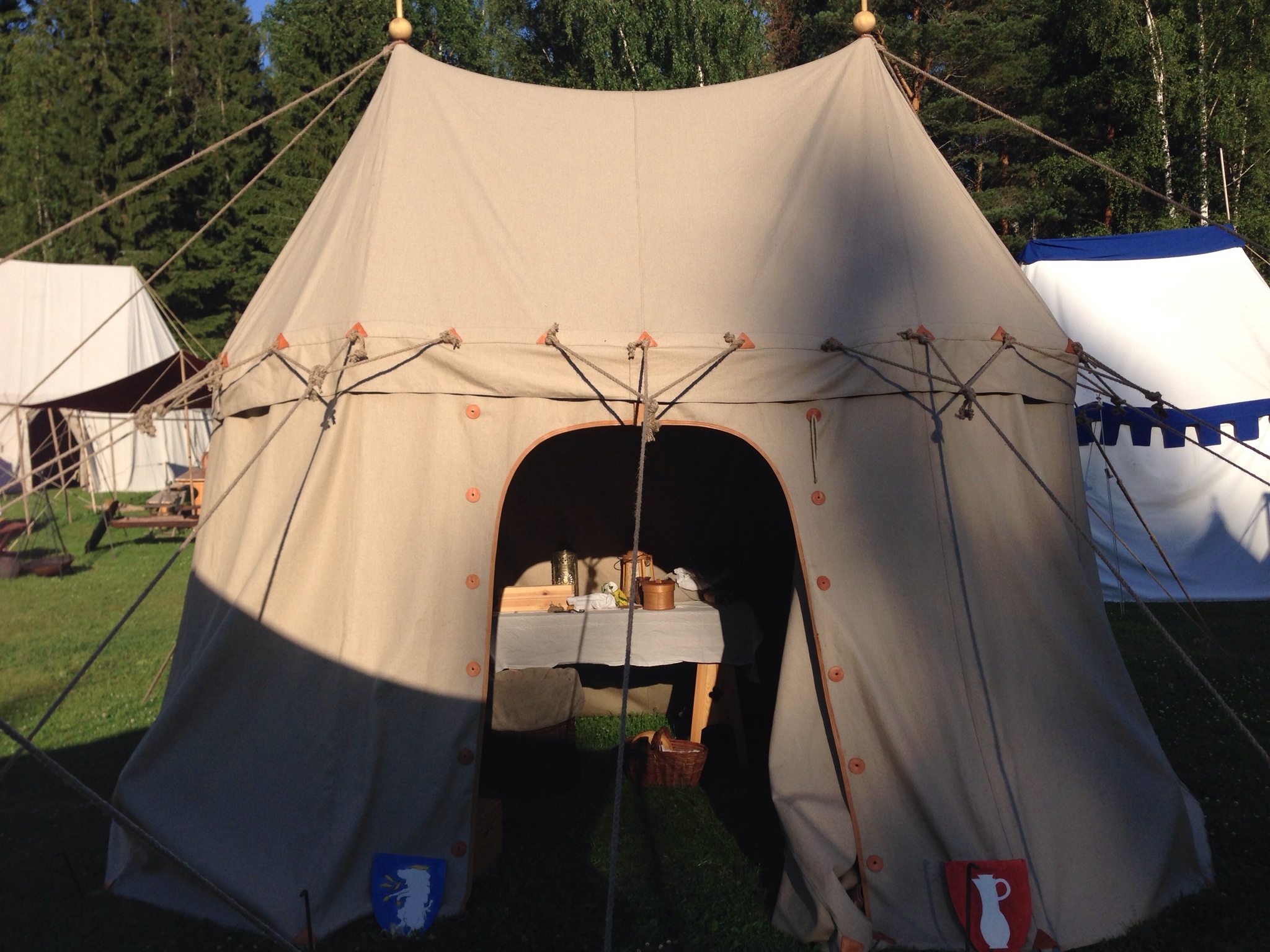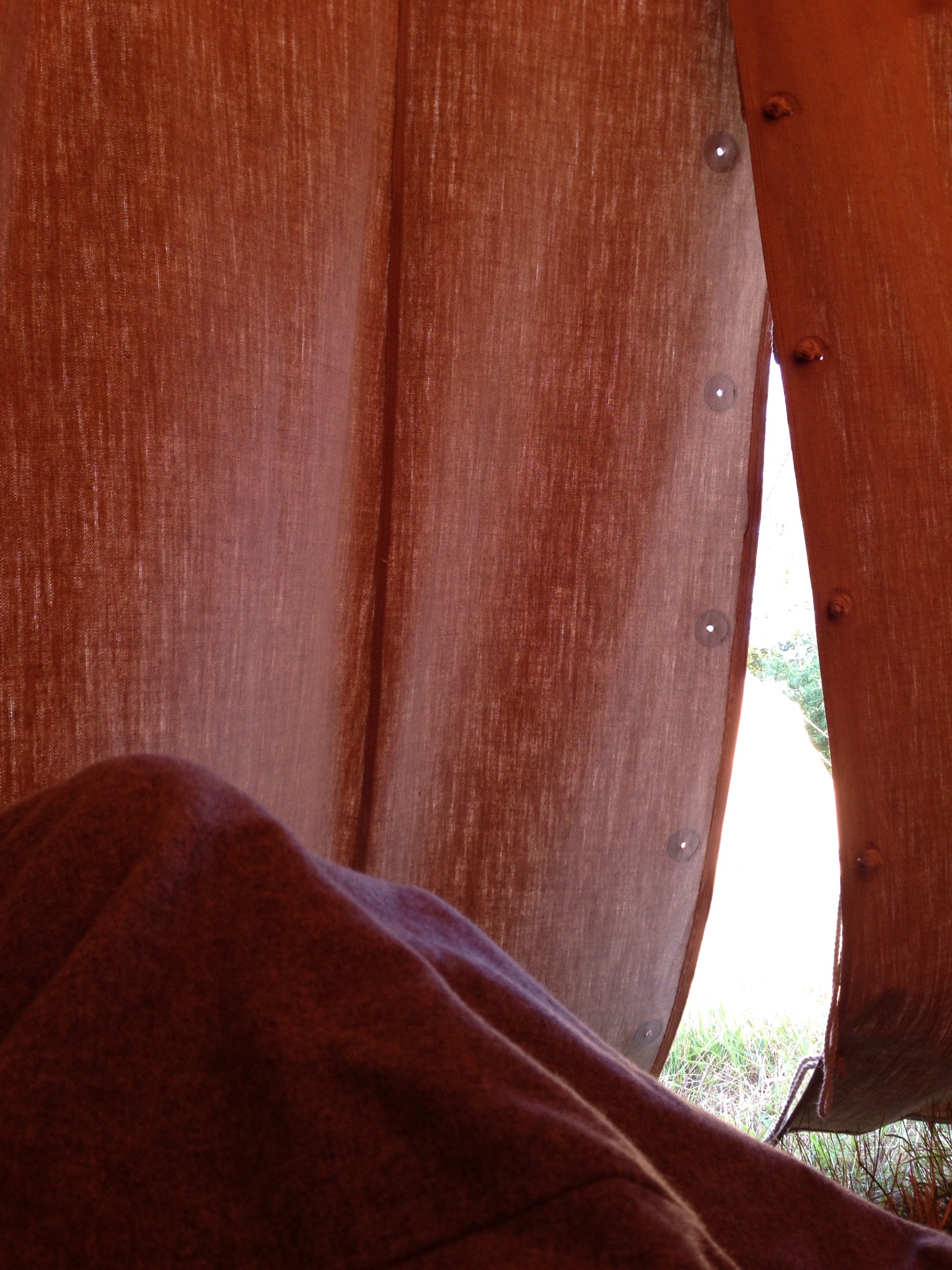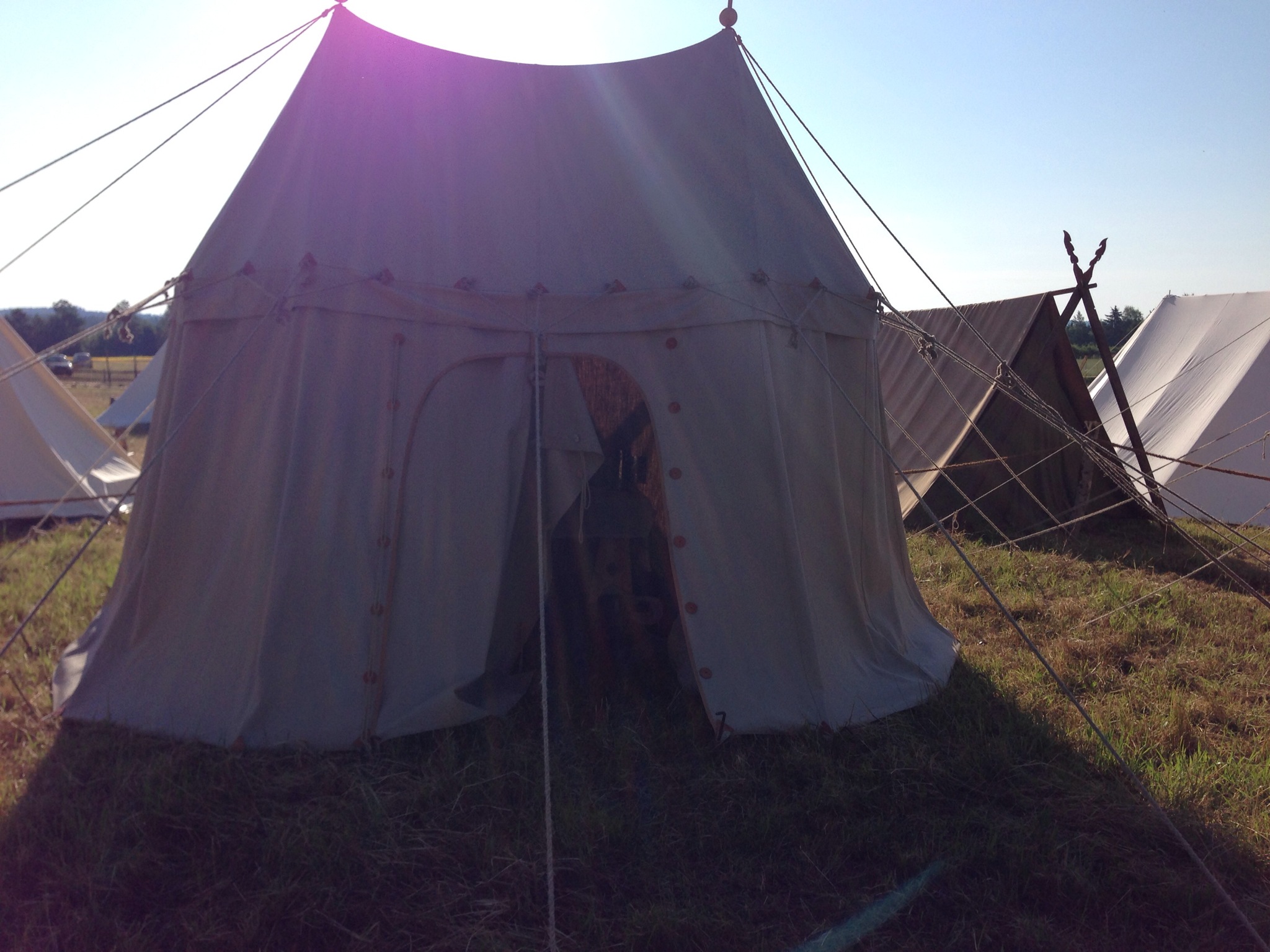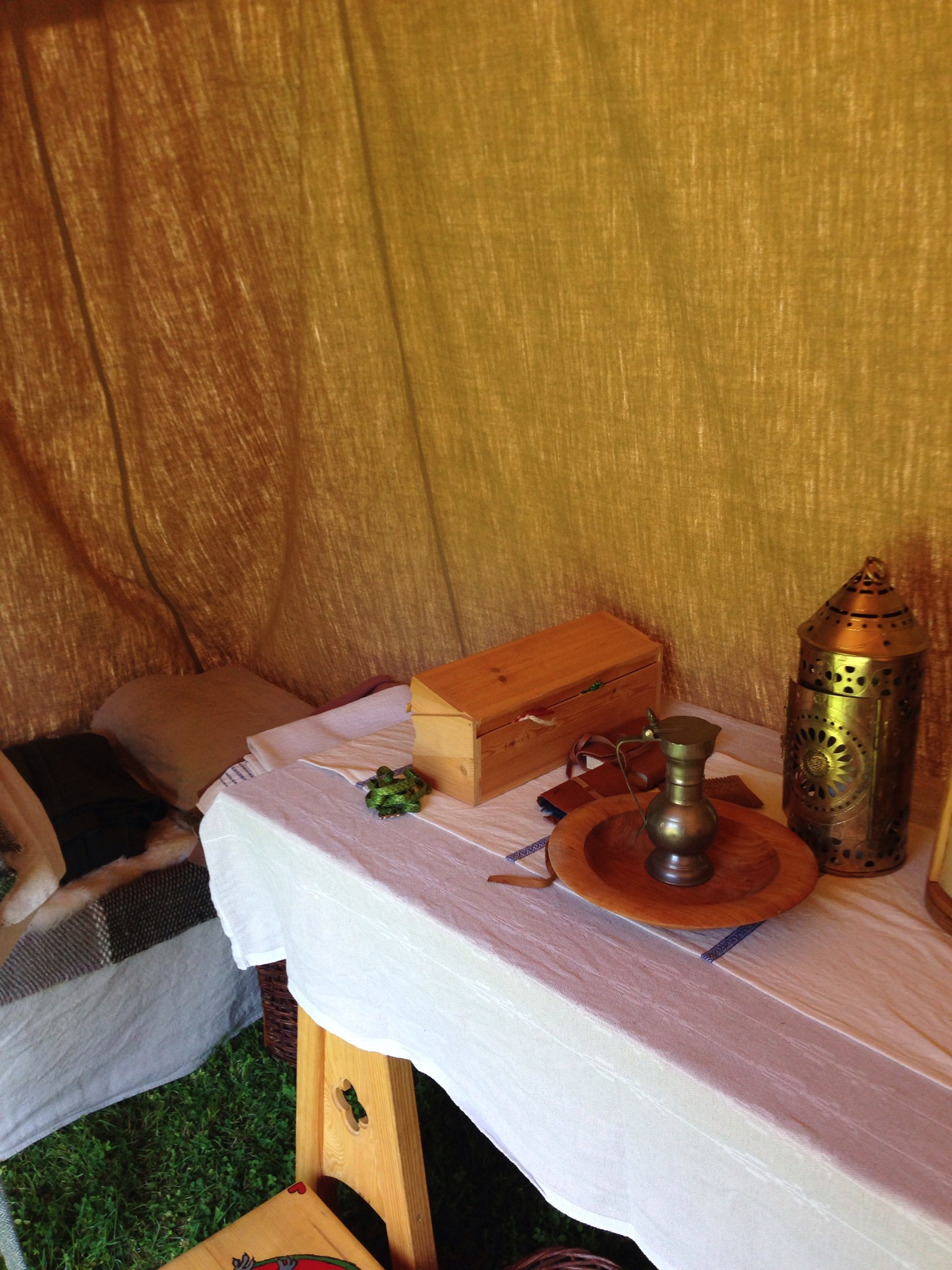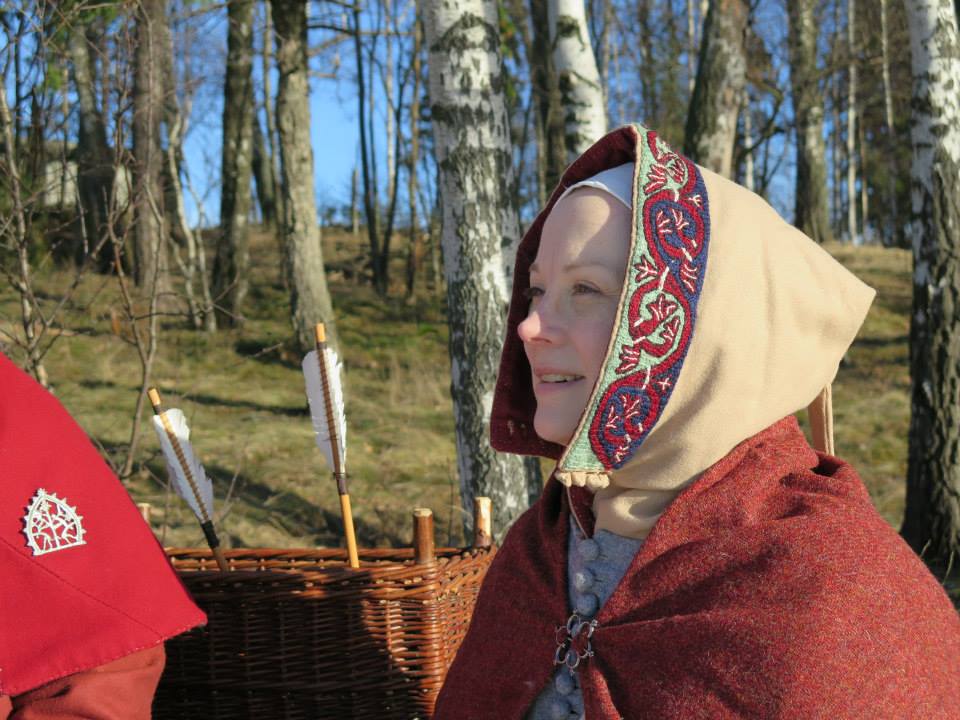
Yleensä on hupaisaa, kun Pinterestin algoritmi tuumaa että voisin ’inspiroitua’ siitä, jos näen kuvan itsestäni tai jostain tekemästäni jutusta. Mutta sitten on tämä yksi kuva. Ja sitä tietenkin Pinterest ehdottaa inspiraatioksi tosi usein (ks. yllä).
Kuvassa ollaan Iloisen Joutsenen porukalla ihanassa Ronneburgissa ja kaikki näyttää hyvältä – paitsi että olen kuvassa keskiajan mielessä TODELLA NOLO: alusmekon helma näkyy!
Keskiajalla pukeutumisen kanssa kuului olla tarkkana – naisten (ja miesten) piti olla soveliaasti ja siististi pukeutuneita – lisäksi alusmekon vilauttelussa ei ollut uhattuna vain oma, vaan myös aviomiehen ja suvun maine. Ja koska elettiin aikaa ennen sitä kun alusvaatteiden harkitusta vilauttelusta tuli muotia, alusmekko eli alusvaate oli syytä pitää piilossa. Se ei saisi edes vilkkua kaula-aukosta, saati sitten liputtaa helmasta.
Kuten ”Menagier de Paris” kirjoittaa 1300-luvun Ranskassa ohjeita siitä mitä hyvän vaimon tulisi tietää:
”.. you will consider and pay attention to our status and our means, attiring yourself with respect to the estate of your family and mine (…). Make sure that you dress decently without introducing new fashions and without too much or too little ostentation. Before leaving the chamber or home, be mindful that the collar of your shift, of your camisole or of your robe or surcoat does not slip out one over the other, as happens with drunk, foolish or ignorant women who do not care about their own honor or the repute of their husband, and go with (…) their hair in disarray spilling from their coifs and the collars of their shifts and robes all in a muddle one over the other.”
Miksi alusmekon helma vilkkuu? No, kyseessä on vanha mekko joka on alusmekoksi aivan liian pitkä. Tein sen alunperin liian pitkäksi (uutena se oli nilkkamittainen) ja lisäksi käytössä (ehkä kahdeksan vuotta?) pellava on venynyt ja minä kutistunut.
Pinterest oli lopulta oikeassa – se ’inspiroi’ minut korjaamaan mekon nappaamalla 20 cm helmasta niin, että mekko ulottuu pohkeen puoliväliin. Tämä pituus on suhteellisen yleinen niissä harvoissa kuvissa joita naisista alusmekoissaan on maalattu. Samalla parsin jälleen kerran kulahtanutta mekkoa – paikkasin repeämän kaula-aukossa ja laitoin siihen uuden pellavanauhan tueksi.
Mekko joutuu koville, sillä sitä pestään jatkuvasti (toisin kuin muita vaatekerroksia) ja se toimii rintaliivien korvikkeena. Yläosastaan se on istutettu niin napakaksi, että se tukee rintoja mukavasti.
Mekko on ehkä parhaat päivänsä nähnyt, mutta koska se EI NÄY ulospäin, nautin siitä miten se muuttuu aina vain mukavammaksi (ihan kuin farkut) käytön myötä. Lisäksi uusien ompelu on vähän tylsää, joten pidän siitä miten parsimalla saa sen elinikää jatkettua.
Alla sensaatiomaisia alusvaatekuvia alusmekon muutoksista!
#### ENGLISH
Usually it’s sort of amusing when Pinterest’s algorithm thinks I would be ’inspired’ by seeing pictures of myself or stuff I have made. But then there is that one picture. (see above) And of course, Pinterest suggests I look at it really often.
It shows Merry Swan at Ronneburg, having a lovely time – but I’m HIDEOUSLY EMBARRASSING in a medieval sense: the hem of my smock/shift (underdress) is showing!
In the Middle ages, clothing did not only keep one warm, but it also reflected on the wearer’s virtue. For a woman living in the 14th century, being properly and neatly clothed reflected on her reputation as well as that of her household. So it was really important. Since this was before showing your underwear on purpose became fashionable, your smock should not show – not even peek from your neckline let alone wave hello to the world at your hemline like me in that picture.
Like the Menagier de Paris guides his young wife:
”.. you will consider and pay attention to our status and our means, attiring yourself with respect to the estate of your family and mine (…). Make sure that you dress decently without introducing new fashions and without too much or too little ostentation. Before leaving the chamber or home, be mindful that the collar of your shift, of your camisole or of your robe or surcoat does not slip out one over the other, as happens with drunk, foolish or ignorant women who do not care about their own honor or the repute of their husband, and go with (…) their hair in disarray spilling from their coifs and the collars of their shifts and robes all in a muddle one over the other.”
So why this? My smock is simply too long. It’s quite old (8 years, maybe?) and I originally made it too long (it was ankle lenght when new) and as I have been using it the linen has stretched and I have shrunk.
So I guess Pinterest did get it right after all – it inspired me to finally cut off 20 cm’s from my hem and make the hem reach mid-calf. This is a length that seems fairly common in those sadly few pictures of women in their smocks. And as i was working on it, I patched a tear on the neckline and sewed in a new linen tape to reinforce the neckline.
The dress gets a lot of wear since it is getting washed all the time (unlike my other medieval clothes) and it is my substitute for a bra. It’s fit so snugly at the to (bra-level) that it provides me with bra-like comfort and a medieval silhouette.
The dress is admittedly past it’s prime, but since it’s NOT SEEN by anyone else really, I don’t mind. It’s like jeans – the more worn and soft the linen gets the better it feels (nevermind what it looks like). And making new ones is sort of boring sewing, so I enjoy patching it up to see how long it will last me.
And now some scandalous underwear pics of the remade shorter dress!
Neulakinnasukat/Needle bound socks: Swan River Crafts

